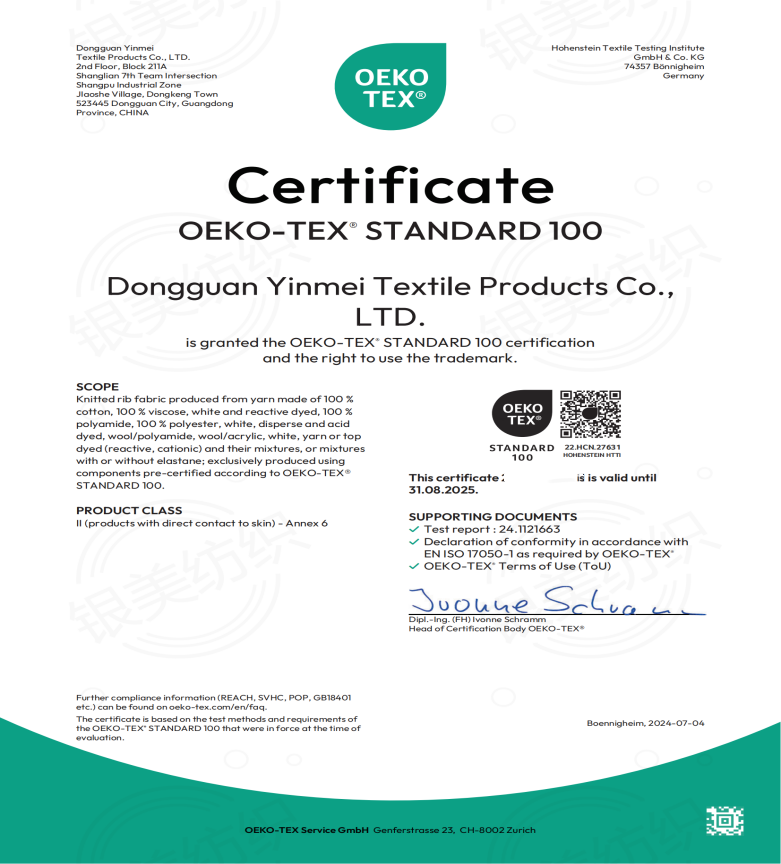What is ribbing?
Nov 30, 2023
What is ribbing?
The English name of rib is Rib.
Rib weave is the basic weave of double-sided weft knitted fabrics. It is composed of front wales and back wales arranged in a certain combination. At the same time, because rib weave is a knitted fabric knitted with two needle beds and is a double-sided knitted fabric, we usually classify it as a double-sided knitted fabric.
Types of rib tissue
There are many types of rib weaves, which depend on the different configurations of the number of longitudinal rows of coils on the front and back sides, which are usually represented by numbers.
For example: 1X1 rib weave: it is knitted with 1 needle bed and 1 needle outlet on the front and rear needle beds. The two are combined into a basic unit, and the entire fabric is obtained through this cycle.
2X1 rib weave: It is a basic unit composed of three coils: a front bed coil, a four-flat coil, and a back bed coil. The needle bed alignment is the position of the groove.
Knitted rib fabric is a double-sided rib fabric. The stitching methods of 1*1 rib fabric and 2*2 rib fabric are different. You can observe that the stitches drawn every other stitch on the fabric are 1*1 rib fabric. , the two stitches drawn every two stitches are 2*2 rib fabric. Rib fabric is generally woven with 19-needle, 16-needle, or 12-needle weft-knitted threads.
The 1*1 rib fabric is a flat fabric, which is the kind with no grooves in the middle, and is straight, just like ordinary fabrics; the 2*2 rib fabric has vertical line marks, and there are grooves between every two needles. Rib fabric has better elasticity.
Knitted fabrics are divided into plain knitted fabrics and rib knitted fabrics. The plain knitted fabric is a knitted plain weave, also called a plain weave, which is a single-sided weave, with vertical strips on the front and horizontal strips on the back; rib knitted fabric is a double-sided weave, that is, double-sided fabric. Both sides have vertical strips.
Plain stitch will have a curling effect, while ribbed tissue will not curl; general knitted jersey refers to plain stitch, such as those used to make cultural shirts, and some who deliberately pursue the curling effect will also use plain stitch. Express.
Circular woven fabric
Or called weft knitted fabric. The main products are: knitted jersey, cotton wool cloth, rib cloth, mesh cloth, polar fleece, air layer, polyester cover, terry cloth, brushed cloth, cut velvet cloth, artificial fur, etc., and there are many mixed fabrics. Methods include: plain rib variation weave, jacquard weave, tuck weave, plating weave, padding weave, terry variation weave, etc. Due to the different needle arrangement rules of weaving methods, the same product will also have many variations, such as: mesh cloth has small mesh, pique mesh, pineapple grid, waffle grid, etc.
Flat woven fabric
Or called warp knitted fabric. The main products are: flat knitted rib, cardigan fabric, yarn sweater fabric, warp knitted plain fabric, warp knitted mesh fabric, warp knitted suede, warp knitted fleece fabric, warp knitted terry fabric, warp knitted terry fabric etc.
On the original basis, changes in raw materials (cotton, linen, silk, chemical fiber, wool, organic hemp, bamboo fiber, corn fiber, seaweed fiber, etc. and blends), dyeing changes (dying, yarn-dyed weaving, color spinning) and process changes ( Changes such as jacquard, interweaving, compounding, brushing, flocking, burnout, washing, stone grinding, coating), etc., will regenerate many varieties. We provide collar, cuff, hem, waistband knitting rib for clothing accessory.

